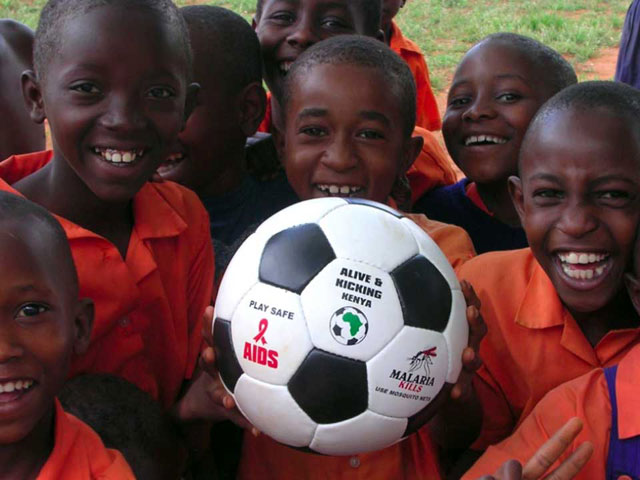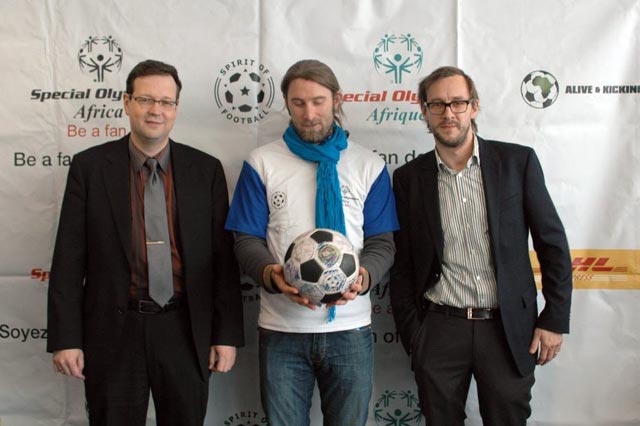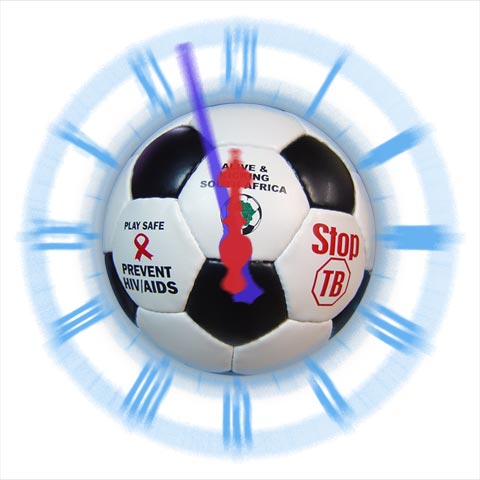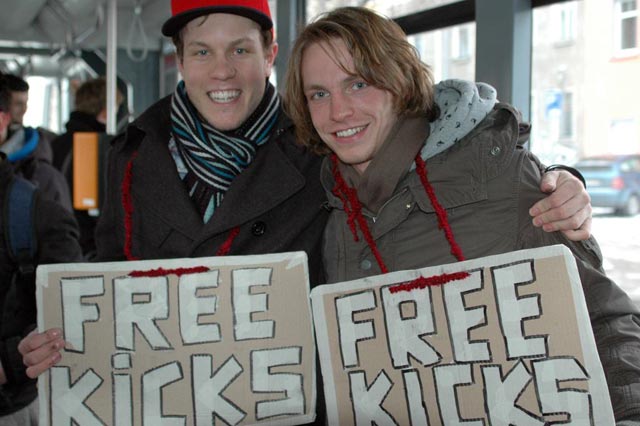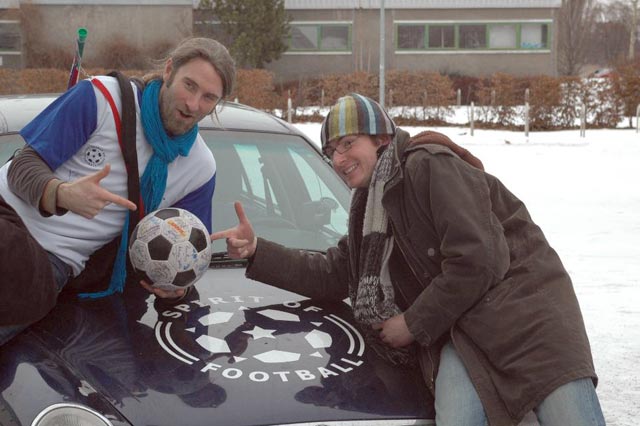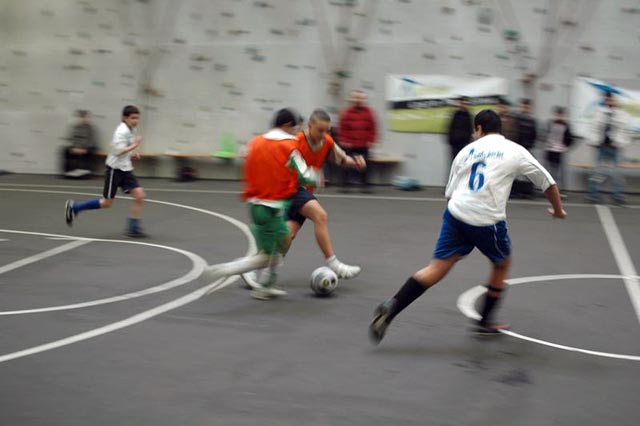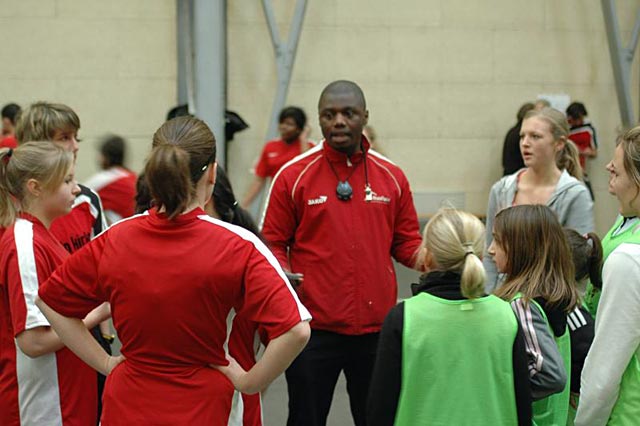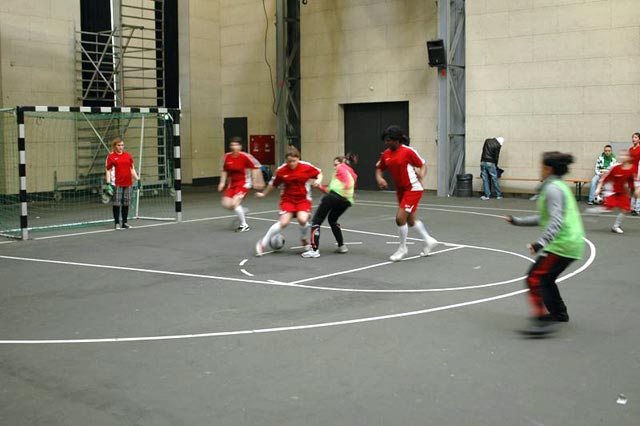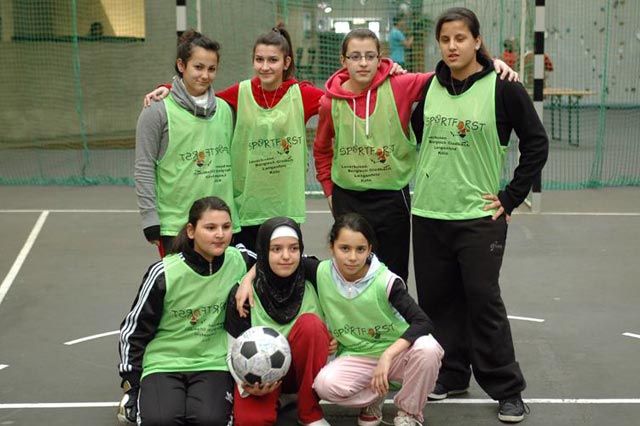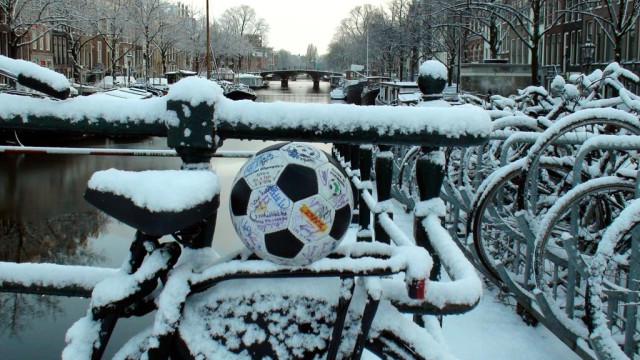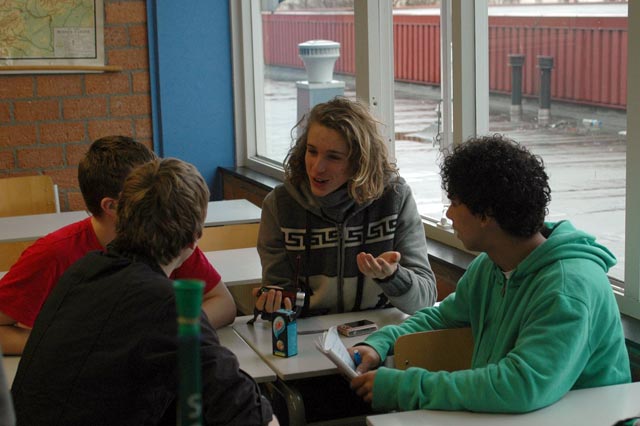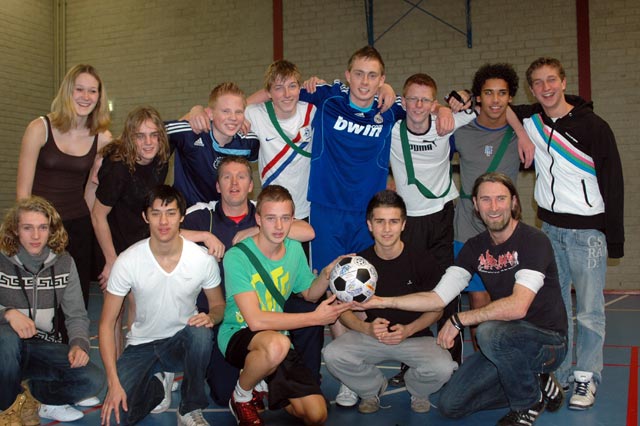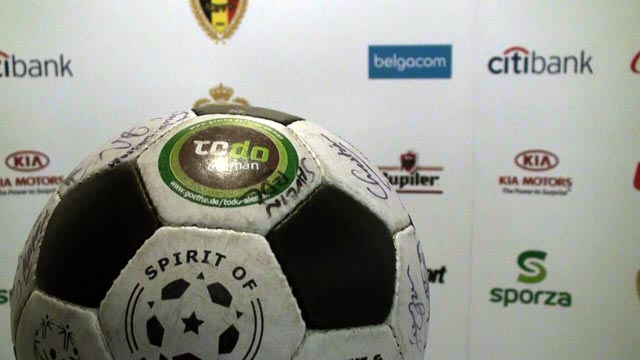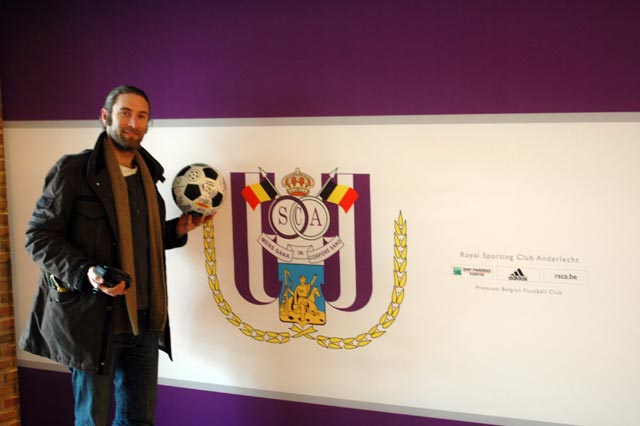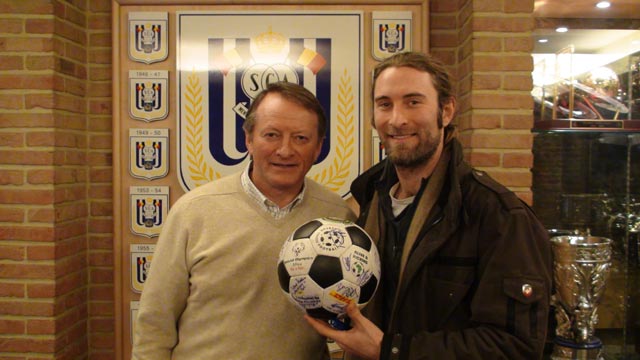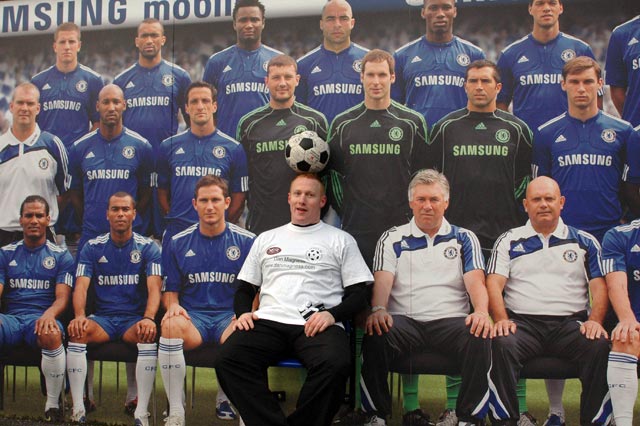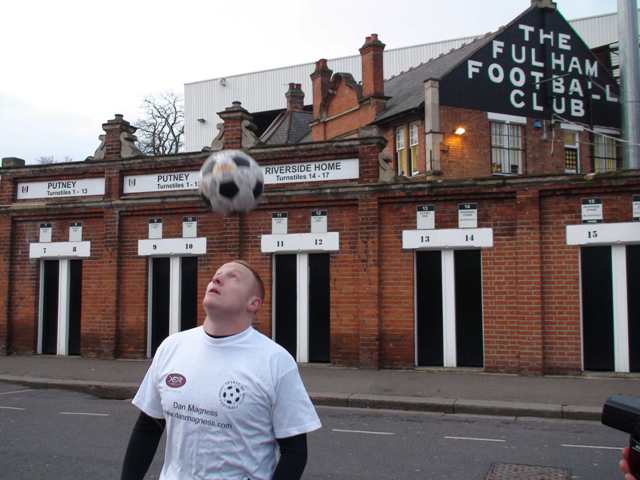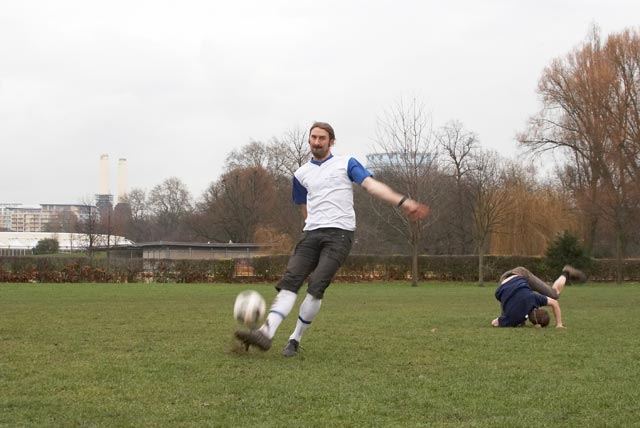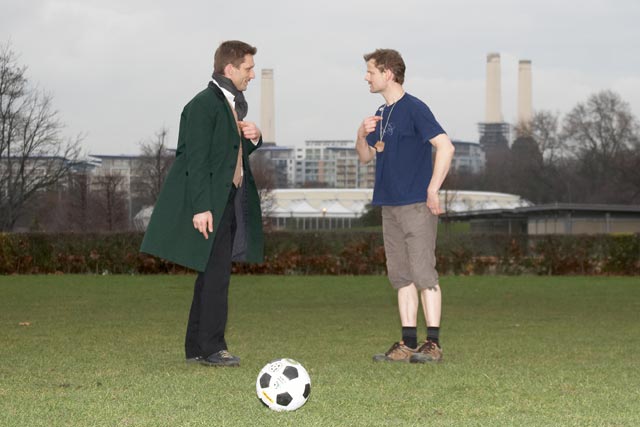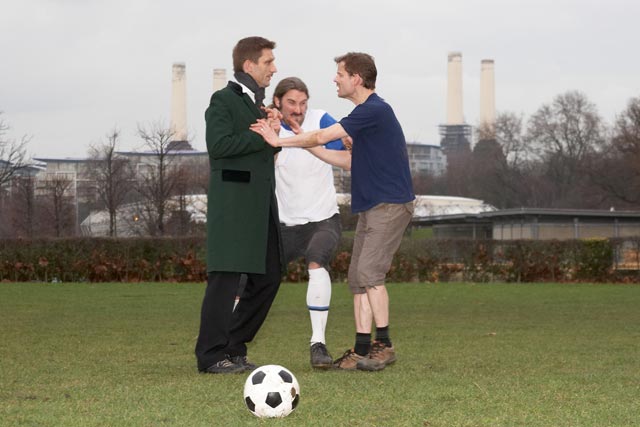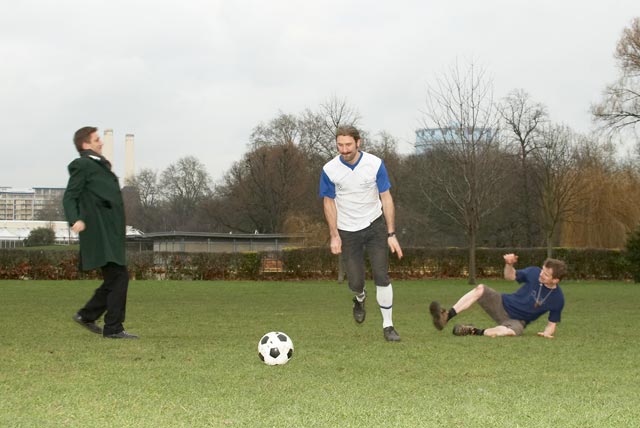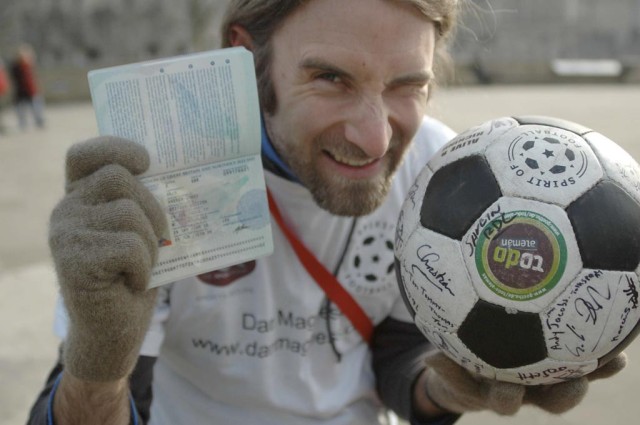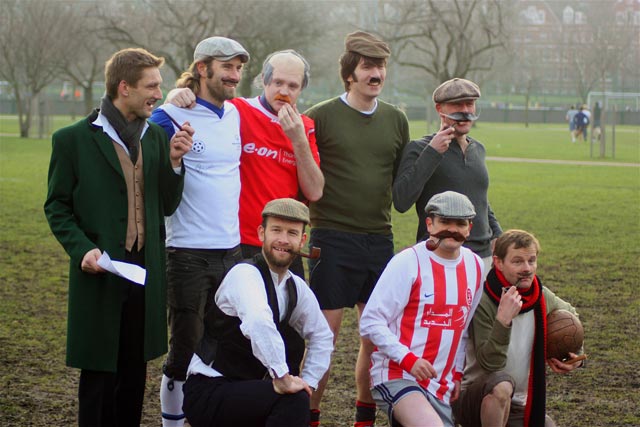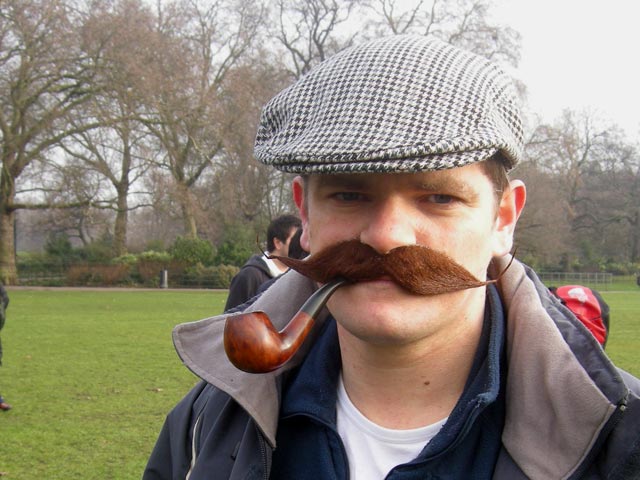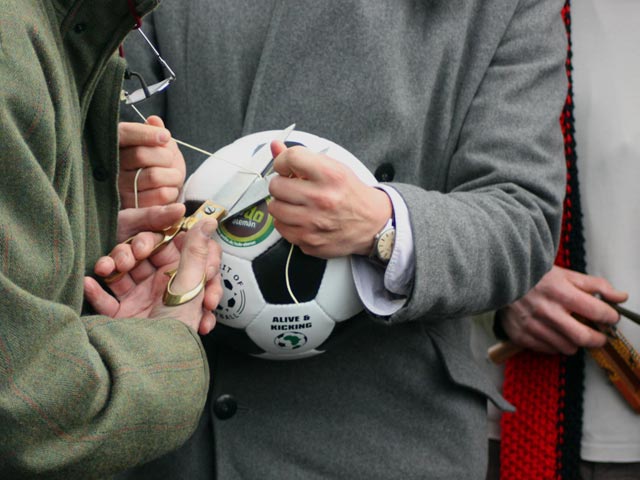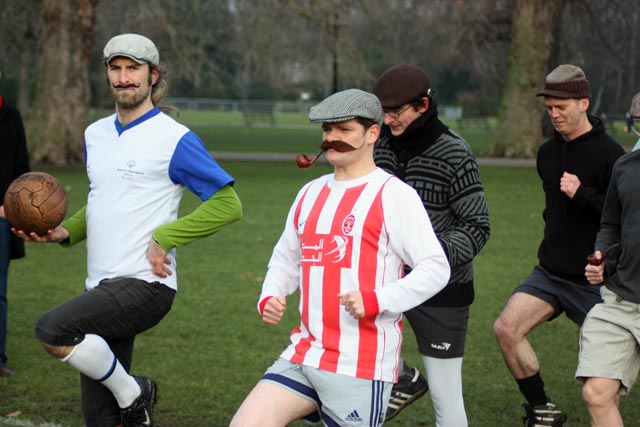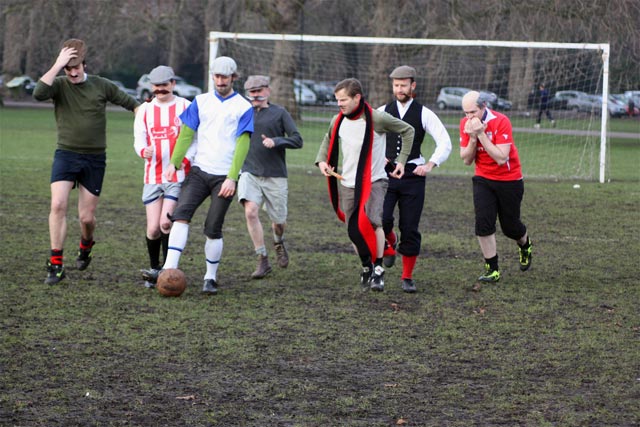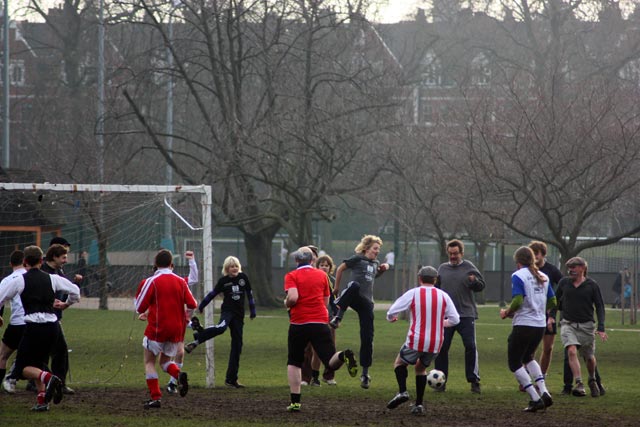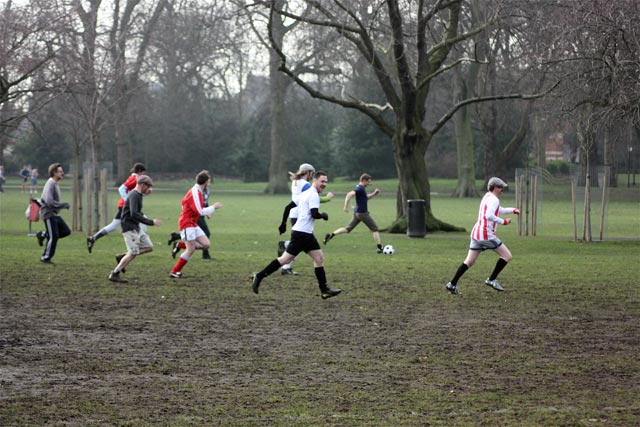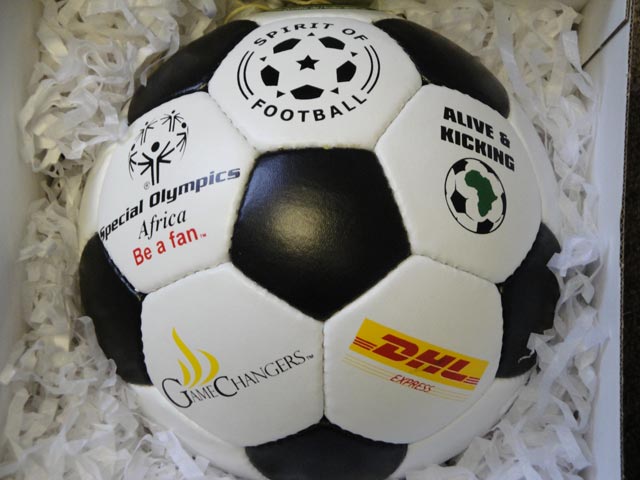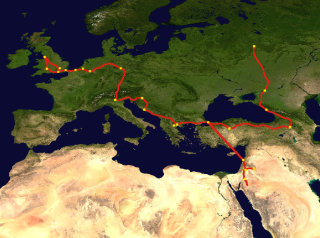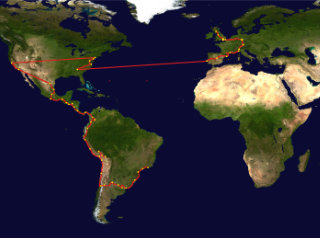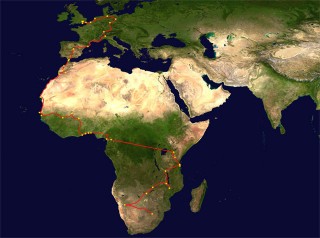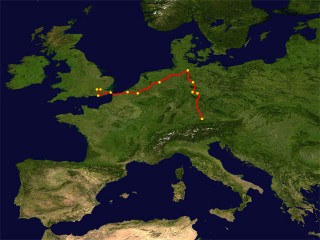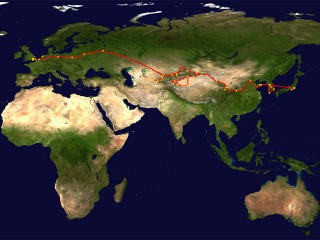I feel like I need another 10 days to really be ready to travel but I have another 1.5 days.
Why does the taxman come calling in my weakest hour? Why does my roommate illegally download a psycho-thriller from the internet — and why does a lawyer in Berlin have to find out about it and bill me (my name is on the internet connection) a few days before the biggest trip of my life?
Why do I suddenly just now realize the millions of little things that need to be taken care of? Why am I so disorganized? Ask my ex-wife –- she’s been telling me for years! Why is it so difficult to get a Nigerian visa? And why is it that I have to fall in love right before I leave?
And, above all, how do I say goodbye to my most treasured friend, my 3.5-year-old son? What the hell am I actually doing, going on the road to the World Cup? Suddenly, I begin to appreciate how sorely I am going to miss my son and how impossible it is for him to understand my being gone.
The doubts have been rising this last week: am I really going to be able to do this? Will I be able to keep the mosquitoes at bay? How am I going to be able to deal with the journey financially, physically, emotionally? What happens when I come back? Am I going to come back? What happens if I am attacked? How will I defend myself?
Can a football really help me through those tricky situations?
The Ball is pausing for a short while in Erfurt while Andrew prepares to leave once and for all on the long haul journey to South Africa. In the meantime, there’s time for some fun with friends around this ancient German city.
{Flash Movie removed}
“Andrew Aris ist wieder in Erfurt – wenn auch nur für kurze Zeit. Der Neuseeländer macht auf seiner “The Ball”-Reise zur WM Station in Thüringen, um den Menschen das 2002 ins Leben gerufene, einzigartige Projekt näherzubringen.” as the Thüringer Allgemeine puts it.
Another day, another Mitfahrgelegenheit passenger — this time Dafina from Bulgaria, whose work as a government retirement consultant takes her over the whole world and, amazingly, may lead to a rendezvous with The Ball in Burkina Faso in March. We arrived in Köln (Cologne) right on time for the finals of an indoor street football cup organised by Köln Kickt.
Köln Kickt works predominantly with socially-disadvantaged, immigrant youth. Football brings the kids together and provides valuable life skills, integrates them into society, keeps them fit and off the streets as well as providing opportunities for social and personal development.
We were greeted by Jose Londji, an ex-professional from Cologne and Bayer Leverkusen who played for Congo at the African National Championships before his career ended prematurely due to injury.
The Ball was the guest of honour and was played with in the final of the boys’ competition and the opening games of the girls’ competition. The young people enthusiastically kicked The Ball and those that did got to sign it too.
Germany’s freestyle champion Dominik Kaiser gave a performance that will be remembered for a long time. What amazing skills.
We also had the chance to find out about Köln Kickt’s social football initiatives and to hear about an exciting World Cup project that is being organised together with 1FC Cologne (the top German Bundesliga football team) and 10 schools from all over Cologne. Each school “adopts” a different African nation and will get involved in cultural, music, art and sports projects that reflect the spirit of that country. In the lead up to the World Cup they will then present what they have done at the City Hall. And The Ball is going to be integrated into these classrooms: an exciting and unexpected development, which we are delighted about.
Next stop: Erfurt. Final preparations (travel gear), visit to the Health Department, a Nigerian visa to sort out and most importantly the chance to spend some time with my lovely little boy. Pauli, papa misses you.
Prelude: Hup, Holland
We left that afternoon for Amsterdam with two passengers in The Golf Ball: Manuel (a VFB Stuttgart fan) and Antonio (an actor from Spain and a big fan of FC Sevilla) who found Sven’s offer of a ride on the German travel portal Mitfahrgelegenheit. The two lads were educated in the way of The Ball and both took pleasure in kicking and signing it en route to Amsterdam. Olé, Olé Olé Olé.
Amsterdam, Holland
Amsterdam. Ohhhh Amsterdam. It was so good to see you again and such a shame to leave a few days later. I lived in The Dam for 8 months in 2000-2001. It was an orange time. Euro 2000. The Dutch were hosting and the town was in total football fever: orange hanging from every window. It is without question the city have most enjoyed living in. Many thanks to our wonderful partner, the Goethe-Institut for putting us up for a few nights in the German Seamen’s Mission in Keisersgracht in central Amsterdam.
Leiden, Holland
On Friday, we travelled with our partner Rainer Manke, Language Director of the Goethe-Institut in Amsterdam, to Leiden. In Leiden, we led a workshop for motivated youths from the Leonardo Da Vinci Sports School. We presented Spirit of Football in one of their state-of-the-art classrooms. We talked about previous journeys, introduced the 2010 journey through video and music — and interacted with the pupils and found out what “the spirit of football” meant to them.
After the education session we headed to their indoor gymnasium to play football with The Ball. Similar to the kick-off in Battersea Park, we played football using the 1864 rules. It was not so easy to play with these rules in a small confined PE gym. Interestingly, the kids managed to figure out the new old rules much quicker than us adults did at Battersea Park a few days ago. The second half was a more traditional game of football.
That evening Rainer invited us to dinner at his home in Amsterdam. We were treated to bulgogi by his lovely Korean wife. Discussions that evening turned to the role football can play in the classroom. Henrietta, a German teacher in Leiden and Rainer, the language expert from the Goethe-Institut, gave us some positive feedback. They had both been astounded by how the kids had responded to the lesson. They saw that football offers a real opportunity to engage youths and then to explore other topics like geography and history. Sven talked about German history through football, referring back to 1954, 1974 and 1990 — the years Germany was world champion and the social and political situation in Germany at those times.
This lesson was a valuable first for us, as, on our long and bumpy road to South Africa, we have up to 25 school visits. These visits offer us the chance to engage with young people from diverse cultural backgrounds; to discuss football and the world with them; to teach them something and to learn many more things from them. As we were leaving the school in Leiden we were stopped by a group of teenagers who are learning dance, with very little prompting they agreed to an impromptu dance performance with The Ball. Football, music, culture, geography, history, dance, art… they all come together when one talks about The Ball.
In the early evening I hooked up with Holland’s most famous freestyler Abdellah. He’s an Algerian street football performer. He told me that he loves to play around with people. He is not purely a performer, his love of interaction is what drives him. His performances combine playing football in short sided games, juggling his football with others and including all kinds of passers by in the action. He hurt his hand recently and could not show off his famous lamp-post routine: Normally he juggles his ball with all parts of his body without dropping it… all while he free-climbs a lamp-post. From the top of the lamp-post, he dangles acrobatically, always in control of the ball. Abdullah: world famous in Holland.
The Golf Ball made quick work of the journey from Brugge to Brussels and before we knew it we were meeting with the Belgian FA’s press spokesperson and finding out about Belgium’s colonial football links to Africa, the importance of African footballers in Belgium football and the Belgium and Holland’s joint World Cup bids for 2018 and 2022.
Next stop was the working class suburb of Anderlecht and a visit to Royal Sports Club Anderlecht, Belgium’s most successful football club. We were fortunate enough to be granted an audience with the Anderlecht head coach, Ariel Jacobs, who gave us a wonderful insight into the Belgian football scene.
We found out about a 16-year-old local lad Romelu Lukaku, of Congolese descent, who is suddenly the biggest talent in Belgian football and wanted by top clubs across Europe (Chelsea, Arsenal, Real Madrid for example). The club makes sure he stays in school — they drive him to school every morning, pick him up every afternoon and offer private lessons to cover for any classes missed due to training or away game travel. The lad has his feet on the ground, has his friends around him and is kept away from some of the dangers that top young players across Europe face.
The Ball, in an exclusive interview, told us that it would like to see other big clubs following this youth policy. The Ball hopes to speak to the EU about this upon its return from South Africa in July.
During a quiet moment, we were shown into the stadium itself by brand manager Bert Van Der Auwera, where we had a kickabout on Anderlecht’s hallowed turf with none other than Mbark Boussoufa, the Moroccan international star.
RSC Andelecht works on several innovative youth projects with the EU, including the Double Club initiative whereby youths from Belgium go to a school in London connected to Arsenal FC to learn a specifically designed football English language programme and vice-versa. The Ball thinks that football can be a hook for youngsters to learn other languages and about other cultures and people.
For this enlightened view of how to conduct the business of football — and also because of the unexpectedly warm welcome we received — both Sven and I became fans of Anderlecht.
Olé, Olé Olé Olé!
Many congratulations to Dan Magness for breaking the world record for the longest distance covered whilst continuously keeping the ball off the ground. 35 miles across London visiting every Premiership football ground in the process is a truly astonishing feat of endurance and concentration.
I’m not going to lie about this — Dan’s record attempt was meant to be done with The Ball itself, but, at the last minute, the Guinness people informed Dan that the ball would have to be a FIFA-approved ball or the record wouldn’t count. So what happened was that Dan did the record with an adidas Jabulani, whilst promoting The Ball and Alive & Kicking in interviews.
Big respect to Dan for the way he stuck to the story — and stuck to the task. What a legend!
Andrew and Sven walked the entire route with Dan, joined later in the day by Phil. They brought The Ball with them and tried to engage onlookers and passers-by with it. I spoke briefly to Andrew today and both the and Sven are suffering… blisters and aching limbs will be a reminder of an amazing day.
One of the most important moments for The Ball is the one where it leaves Battersea Park. Kicking it off on its journey is a point of no return. So who was to take the kick? Christian and Phil were unable to decide.
Andrew, wisely, had other ideas. As Christian and Phil squabbled, he took action.
And so, fittingly, it was Andrew — who will do the entire journey this time round — who kicked The Ball 2010 off on its epic journey to South Africa.
Many thanks to Dominic Search for the photographs.
Andrew and Christian accompanied The Ball 2010 as it was invited to appear live on the Hawksbee and Jacobs show on talkSPORT yesterday. Listen to The Ball’s appearance below:
Appearing on live radio is nerve-wracking, so many thanks to Carly Warren, Paul Hawksbee and Andy Jacobs for making us and The Ball so welcome and putting us at ease — as much as they could, at least.
If you don’t have Flash, or if the player is giving you trouble, you can download the MP3 file instead.
Dark shirts v. Light shirts
It’s 10 o’clock on Sunday morning in Battersea Park. People wearing a motley assortment of Victorian costumes can be seen making their way to a football pitch at its western end. Moustaches and pipes at the ready, the players and spectators have gathered to re-enact a game that lies at the very heart of football — a game that also lies largely forgotten.
This pitch is more than just any old pitch — it is the place where the modern game was born. Football itself (of course) predates the game that took place there on 9th January 1864, but the players who took part in that game were playing by the rules which, in an unbroken run lasting 146 years, have become those of the modern game.
The ball to be used in the game is also more than just any old ball — it is The Ball and this game marks the beginning of its epic journey to the ultimate spectacle of the modern game: the football World Cup in South Africa. It has been hand-made for the journey in Kenya (through which it will pass and quite literally “meet its maker”) by Alive & Kicking, whose director Will Prochaska brings it on to the pitch to be presented to the Spirit of Football team. The last stitch has been saved for this moment, and trustee James Flecker ceremonially snips the last thread that makes it ready for action.
And so, graced with the occasional appearance of a weak winter sun, the players — young and old — run purposefully and comically out onto the pitch. The 1863 rules are read out for their benefit, greeted by looks of puzzlement from the teams — and no reassuring show of authority from the referee. It looks like it’s only experience that will lead to an understanding of the game as it was played.
A coin is thrown in the air, the toss is won by the darks, and so the kick-off must be taken by the lights. It is a forward kick, towards a bewildered darks — wondering no doubt what on earth happens now. Initial reactions seem to be to try and play to the rules, but with tactics more suited to the modern game — the forward pass is the first rule that has to be unlearned. The fact that everyone in advance of the ball is offside is the first rule to be strictly observed.
Pipes are accidentally knocked flying and moustaches are a source of distraction, but the players respect the rules (so contentious at the time) that no tripping or hacking be allowed. A young lad, Alex “Fabregas” Cameron, becomes a source of considerable trouble for the darks defense and his link up play with captain Andrew Aris leads to the first goal for lights.
The Boy Noble, sensing a missed opportunity, is the first to catch the ball and call “mark” and the darks have to retreat as a “free” kick is granted. More goals follow for the lights as they adapt to the rules more quickly and darks captain Phil Wake tries to rally them by adopting a scrummage formation to gain ground in open play.
Sir Tom “Tommy” Thomas begins to realise that there is great advantage in chasing the ball even once it has left the field of play, since it is the first player to the ball that takes the throw in. Behind the goal line, it is even more important, the outcome being either a goal kick for the defenders or a free kick at goal for the attackers.
The unfamiliarity of the rules, which levelled the playing field for all the players, led to the sweetest outcome of the game: a cameraderie and a shared delight in rediscovering the roots of the game which they love.
“The referee needs a monocle!” one player cried, but in the end all players and spectators left with smiles.
Will Prochaska from Alive & Kicking just sent us a photo of The Ball 2010, which has just arrived from Kenya for its kick-off game in Battersea Park.
After the kick-off, The Ball 2010 will leave Battersea Park and travel through Europe and 17 African countries (Morocco, Senegal, Mali, Burkina Faso, Ghana, Ivory Coast, Togo, Benin, Nigeria, Cameroon, Kenya, Tanzania, Malawi, Zambia, Namibia, Botswana and South Africa) to the World Cup Opening Ceremony.
But before it leaves England, on Tuesday January 26th, four times Guinness World Record Holder Dan Magness will attempt to break a world record, by juggling The Ball thirty miles across London, visiting all Premier League football stadiums in London in the process. The current world record stands at 26.1 miles. To successfully beat it, Dan Magness must keep the ball under control at all times using all parts of his body (except his hands) and keeping the ball off the ground.
At each football stadium — Craven Cottage, Stamford Bridge, Upton Park, Emirates and White Hart Lane — Dan will change shirts and reveal the football shirt of that particular Premier League team. Dan’s journey will begin at Craven Cottage, the home of Fulham FC and finish just before kick-off on the pitch at Tottenham Hotspur FC. Tottenham will be playing against Fulham in the Barclays Premier League at 7:45pm.
And so two epic journeys begin with the same ball. Come along to the park and celebrate the kick-off with us…

